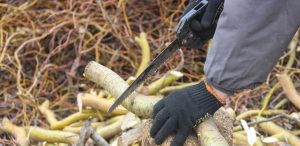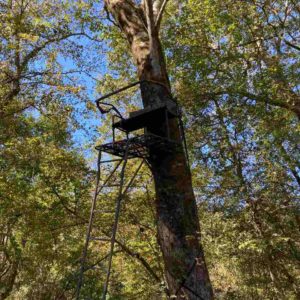
We all tend to go a bit nose-blind on the trail. You get back from a long trip, divide the camping gear into three piles (closet, garage, washer), scrub yourself under the shower for half an hour, and you’re back in the land of the civilized.
Only, your down sleeping bag definitely isn’t.
A couple weeks later you unfurl it to crash on a friend’s sofa and suddenly their whole apartment takes on a unique perfume. Essence of football locker room, with top notes of bug spray and woodsmoke, over a musky base of sweaty feet and mildew.
Good news! That rank down sleeping bag smell doesn’t need to be permanent. You can fix it. You just need to work out what you’re dealing with:
- The villains behind a smelly down sleeping bag can include sweat, dirt, mildew, and mold. Some are more serious than others.
- To get rid of a milder musty odor, it might be enough just to air your sleeping bag. For more stubborn stinks, you’ll need to wash it, and you may even have to send it off to a specialist.
- It’s better to prevent a funky smell developing in the first place if you can. Keep the bag dry, store it properly, and try to keep it clean on the trail.
Things That Can Make a Down Sleeping Bag Smell
Sweat and Dirt
Thru-hikers are known for many things. Beards, blisters, spindly physiques, dog-eared copies of Thoreau and Krakauer.
What they are not known for is extreme cleanliness and the delicate fragrance of jasmine petals emanating from their underwear.
And that’s OK. The fact is that camping and hiking are not sanitized experiences, shrink-wrapped and sterile. Do it properly and you’ll get sweaty and dirty, maybe sit by a smoky campfire or gut a fish you’ve caught.
Inevitably, when you crawl into your sleeping bag for the night, many of these odors will take up residence there, and will live on in your expensive down bag long after you yourself have returned home and soaked yourself in a hot bath.
In fact, even if you’re unusually scrupulous about your camping hygiene, your body oils will eventually end up dirtying up your bag anyway as you sleep. Not only does this cause that distinctive smell, but it’ll also stop the down from lofting properly (i.e., puffing up to keep you warm).
Mildew and Mold (Down Sleeping Bag Smells Like Wet Dog)
You’ll be flattered to discover that some of the worst sleeping bag odors are nothing to do with the person who’s slept in it (unless you have allowed your wet dog to share your bag).
Mold and mildew have a distinctive odor (think clothes that have been left too long in the washer before you hang them up to dry), and it can be quite difficult to get rid of.
It’s damp that causes these odors — and, unfortunately, moisture is the Achilles heel of down bags. Not only does getting them wet seriously compromise their insulating qualities, but it also takes them ages to dry out again.
If bags stay damp long enough, mildew or mold may set in — and this can eventually turn to rot, destroying that warm down filling.
When down sleeping bags get wet on a camping trip, they can be difficult to dry (especially when you get a run of bad weather on a multi-day hike), but at least in those situations you’re unpacking the bag and airing it out each day.
More often, mildew and mold are the result of something you’ve done when you got home. People sometimes store their sleeping bags in damp closets, or leave them compressed down in stuff sacks for too long (stuff sacks are for travel, not storage).
Perversely, mildew can often be the result of washing your sleeping bag. Because down takes so long to dry, it’s tempting to pack it away when it’s still slightly damp, and that’s when the rot will set in.
How to Solve Bad Sleeping Bag Smells
Air It
Sometimes, all you need to do with a stinky sleeping bag is just hang it out in the sun for a day or two. Fresh air and warm weather will waft away the odors, and your bag will no longer smell bad.
If you think it needs a bit of help, misting the bag with a gentle odor remover like Febreze might do the trick. It won’t penetrate through to the down filling, but it could freshen up the shell material.
Machine Wash it
More stubborn odors — including those caused by damp and mildew — can only really be solved by washing. But the good news is that down actually launders pretty well in a standard washer.
The key is to do it properly:
- First check if your down sleeping bag has any specific laundry instructions (some may recommend, for example, that you hand wash). This is particularly important for bags that use hydrophobic down or that have other water-resistant treatments.
- Use a specialist technical down cleaner — NOT standard detergent — and follow the instructions on the bottle. Make sure there’s no detergent build-up in the dispenser of your washer before you start.
- Some people like to do an extra rinse cycle at the end, while an extra spin cycle will speed up drying time.
- It’s fine to use a dryer (and usually advisable, since air drying down takes forever). The synthetic shell materials used on sleeping bags are often vulnerable to heat, so it’s best just to use a warm setting. Dryer balls or tennis balls should help loosen clumps.
- Hang it out on a line in the sun if you can. The really important thing is to get the bag absolutely bone-dry before you store it away.
Send It to a Specialist Company
There are folk out there that specialize in cleaning really filthy down bags. They’ve got the experience and equipment to do a much deeper clean than you can manage at home, and the bag you get back from them will usually be as good as new.
You can even ask them to top up the insulation if you’ve lost some over the years.
For a properly revolting bag — like one where the down insulation has begun to rot — you may need to go for the nuclear option and have the down replaced. You can try doing it yourself by buying the down online, but it’s a tricky one to get right and the professionals will probably do a much better job.
While reconditioning down sleeping bags like this is quite expensive, it’s still much cheaper (and more environmentally friendly) than buying a brand new one.
Prevention Is Better Than Cure
The best way to deal with a “ripe” sleeping bag is to not let it get that way in the first place. Try the following tips to keep your bag smelling fresh:
- Try to keep your down sleeping bag dry.
- Air your bag periodically when possible.
- Store sleeping bags in a loose cotton or mesh sack with enough room for air to circulate.
- Keep it in a dry place.
- Don’t compress the bag right down into a stuff sack for long-term storage.
- Never store bags damp.
- Try and wash yourself each evening when you’re camping.
- Consider keeping a set of clean clothes to sleep in, rather than the dirty clothes you’ve spent all day hiking in.
- Use a sleeping pad to keep the bag off the ground when camping, and a sleeping bag liner if you have space to carry one in your pack.
- Don’t let the dog in your sleeping bag with you.
FAQs
How Do You Get the Smell Out of a Down Sleeping Bag?
How you get the smell out of a down sleeping bag depends somewhat on why it smells. You can get rid of mild odors by airing the bag. Laundering using special down wash can get stronger smells out. Really revolting bags may need to be sent off to a specialist.
Why Does My New Down Sleeping Bag Smell?
Your new down sleeping bag is most likely to smell if the down was not properly handled when your bag was being made. Budget down sleeping bags from unknown brands may not have properly washed or treated the down.
Can You Febreze a Down Sleeping Bag?
You can use an odor remover like Febreze on down bags when you’re airing them out after a trip, but this will only freshen up the exterior shell rather than the down filling.
Can Down Sleeping Bags Mold?
Down sleeping bags can and do suffer from mildew and mold. Down bags are particularly prone to this, and you’ll need to wash them with special down detergent to try and get rid of it.
Why Does My Down Sleeping Bag Smell After Washing?
If your down sleeping bag smells after washing it’s probably because it’s taking too long to dry. Try washing it again with a special down wash and tumble drying on a low heat. If that doesn’t work you may want to send it off to a specialist company for refurbishing.





